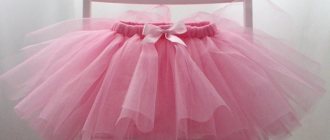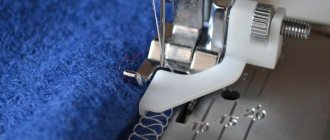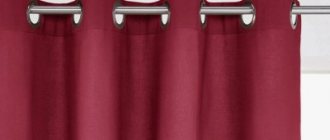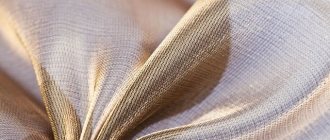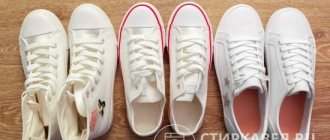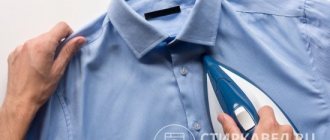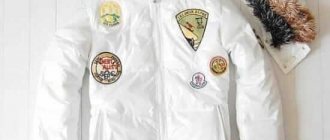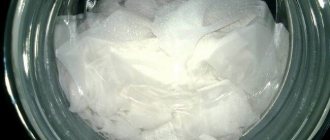Definitely, velvet is one of the noblest fabrics, but often people deny themselves the pleasure of wearing garments made from it, since velvet requires great difficulty in care. However, as they say, beauty requires sacrifice, and if you still decide to amaze everyone with the shine of this material, you need to remember a few simple techniques for caring for velvet. One of the most common problems is the appearance of wrinkles on the fabric. This problem can be easily dealt with at home.
How to iron velvet correctly
Clothes made from velvet fabric look elite and noble; curtains and textiles give any setting a touch of real palace luxury. However, even the most favorable impression can be instantly spoiled by folds and creases - they overshadow all other flattering qualities, because a truly aristocratic item will never, ever allow itself such defects. How to save the reputation of this beautiful, but rather capricious material to care for?
Features of ironing velvet
It is preferable to steam absolutely all velvet items rather than iron them - as a last resort, if you do not have a special device, you can stretch the fabric over the spout of a boiling kettle. When using a steam generator, the temperature of the device is set at 90-100 degrees , the slightly dry product is fixed on “hangers”. Processing is done from the inside out, the largest parts are smoothed out first.
If the housewife still has to deal with the iron, the minimum temperature mode is selected. The rules remain the same: the fabric should be slightly damp and turned inside out. You need to iron velvet items through a dampened cotton cloth, lightly and with the slightest pressure, quickly moving along the loops of the fabric - otherwise the product risks stretching.
The ironing principles that apply to velvet also apply to velor fabric.
How to iron velvet without contact with an iron or steamer
There is another interesting (and most importantly, simple and effective) way to smooth out crumpled velvet: it involves applying a kind of warming compress.
♦ Lay out a blanket folded in several layers on a large, flat surface;
♦ Spread a cotton sheet soaked in hot water directly on top. Straighten carefully, eliminating all wrinkles;
♦ Without delay, pin the velvet product to the sheet. Fix the pins at equal distances, first along the length and then along the width of the item;
♦ cover the velvet with a dry sheet. Spread another wet one on top of it.
The resulting “sandwich” is left for the whole night. By the next day the fabric will be perfectly ironed. To eliminate individual, small wrinkles, apply a warm, slightly damp towel to the velvet.
Alternatively, you can perform tricky manipulations with the iron - it will not touch the material directly; folds on the velvet are removed through an “intermediary” in the form of foam rubber. In this case, you will have to iron the velvet parts one by one, and not the whole thing at once, which will require more time and patience.
♦ Take a piece of foam rubber of suitable size. Soak in hot water, squeeze thoroughly and cover with a cotton napkin;
♦ Set the iron to maximum heat. As soon as it gets hot, place it directly on the foam rubber and hold it for a minute until hot steam appears;
♦ set the device aside, and immediately place the velvet item on the foam rubber before it cools down.
This procedure must be repeated until the wrinkles are completely eliminated, periodically moistening the foam rubber and the napkin covering it. It is important to ensure that your hands are always dry when in contact with the material - wet hands may leave marks.
It is advisable to always keep clothes made of velvet fabric hung on hangers to prevent the pile from becoming tangled. Before packing, it is better to turn the item that is about to travel in a suitcase inside out and roll it up - if possible, with a terry towel.
Velvet curtains: details
Velvet is a material that has a thick coating on the outside with short fibers. Initially, the basis of the fabric was silk. Currently, artificial fiber is used for these purposes. The originality of its exterior is achieved with the help of special types and methods of weaving threads used to make the base and pile covering. When creating curtains, manufacturers use the following types of velvet.
Velor, most people believe that this name describes low-quality velvet with short and infrequent pile. In fact, real velor curtains made from French material are amazingly beautiful and very expensive. Corduroy - a characteristic feature that distinguishes this velvet material is the specific formation of the pile covering, which allows you to obtain a unique pattern in the form of parallel scars. Quite often it is made from cotton. When used correctly in the interior, the direction of strips of fabric can visually increase the height or width of the room.
Panvelvet material has a very original appearance, thanks to its shiny patterned embossing. Velvet devore is a transparent or translucent fabric with a velvety pattern. At the same time, the manufacturing technology is such that the pattern on the pile in the desired places is etched with chemicals until the desired pattern appears.
Some tips for handling velvet curtains
Before washing curtains you need to:
- Make sure they are suitable for this process. Even hand washing is not suitable for all types of velvet.
- Remove decorative elements such as braid, soutache and frills. All this will need to be sewn into place after washing and drying of the product.
- Place the fabric in a special washing bag.
- Start the wash without spinning at 30 °C in a soft mode, such as “Silk” or “Manual”.
- At the end of washing, you need to get rid of excess water. To do this, wet fabric is placed between terry cloths, which are rolled up tightly. After this, you need to wait a quarter of an hour, spread it on a dry terry sheet and wait until it dries. Before ironing and packing velvet for storage, it is worth considering that: 6. The process of ironing velvet fabric is as complicated as washing, and is carried out without pressure strictly in the direction of the pile.
- The choice of the correct temperature is made according to the composition of the velvet.
- Fabrics with short piles should be ironed without steam, and fabrics with long piles should be ironed with it.
- Before ironing velvet curtains, they must be laid on a soft lining of plush or terry cloth.
- When packing, velvet fabric should not be folded like other materials, as permanent creases and folds may appear. To save it, you need to wind it on a cardboard reel, placing it with the fleecy side inward.
When choosing velvet decoration for window and door openings, it is worth taking into account its appearance, characteristic features and practicality. After all, the presence of luxurious material in the decor does not guarantee the attractiveness of the entire interior as a whole, especially if it is out of place. Velvet curtains should be dry cleaned once every 6 months. Before doing this, it is worth taking a high-quality photo of them so that the craftsmen can understand what appearance the products should have after their work.
How to care for velvet curtains
Velvet is a very popular and stylish material. It is often used to make clothing (velvet women's dresses look especially elegant), shoes, bags and decorative elements. Recently, designers have often used velvet to make curtains, furniture upholstery, textiles and canopies. This is a very elegant and beautiful material, and it is also very comfortable, safe and hypoallergenic. Mites don’t like this material, so you don’t have to worry about them getting in there, and it doesn’t attract dust well. It is perfect for both curtains and home textiles, because velvet allows air to pass through and allows the skin to breathe.
Detergents for washing capricious fabrics
To wash velvet, any liquid or gel product that is designed for wool, silk and sensitive fabrics is suitable.
They are designed for gentle and gentle washing, do not destroy fabric fibers and cope well with dirt. They usually contain natural plant components, which provide gentle rinsing. They do not contain chemical additives, synthetics or optical brighteners.
Such products do not harm the skin of the hands, preventing them from drying out. An example would be Sodasan concentrate, which is used to hand wash dresses, skirts and tops.
As an analogue, you can use a concentrated gel for washing delicate fabrics and baby clothes. Usually has an anti-allergenic composition. An example of such a gel is SonixBio Sensitive. It can be added when machine washing velvet baby onesies.
Velvet Lotos universal washing powder is a less recommended, but still used by some housewives, product for cleaning delicate fabric. The main condition for its use is long-term rinsing after washing, because the granules tend to remain in the fibers of the fabric.
How to properly wash velvet curtains
The beauty and effectiveness of velvet is directly proportional to the amount and difficulty of caring for it. If you do this task incorrectly, the curtains will quickly fade, the pile will become coarse, and the curtains themselves will become thinner. Velvet is a stylish and comfortable material; it is flexible enough to be used to form beautiful draperies, and it insulates well from noise, sun, and drafts.
To maintain its original appearance you need:
- Carry out regular dry cleaning;
- wash the material delicately;
- iron very carefully;
- and store correctly.
Washing velvet at home is quite difficult, so many people resort to dry cleaning. But it is worth remembering one rule: do not put velvet in the washing machine, even at the most delicate mode and low temperature, there is a high probability that one time will be enough to ruin the appearance of the curtains. Most often, dry cleaning will be sufficient for velvet, and general washing is recommended to be done once every six months.
You need to wash in water whose temperature does not exceed 30 degrees. There is no need to twist the fabric; there is a risk of damaging and deforming it. You need to gently wring out the fabric after washing. You should also avoid harsh detergents, especially bleaches. It is very convenient to dry velvet curtains laid out on several towels that will absorb water. It is better not to dry it in the sun, as the fabric may become wrinkled in the form in which it was left after washing.
Caring for artificial velor in a car
To care for velor in your car, you can use a special cleaning brush. A sticky roller intended for clothing is also used.
However, the simplest and most convenient way to care for car covers is a vacuum cleaner. In this case, take a soft nozzle. Due to its fleecy structure, dust quickly accumulates on the material.
How to clean velor in the interior? Stains can be removed with a solution of water and laundry soap. Detergents that are used when cleaning carpets are also good. Before using a new product, apply a small amount to a separate area to avoid unpleasant surprises.
Knowing how to care for velor will allow you to maintain the original appearance of your products for a long time.
We recommend that you find out more information in the video:
© 2021 textiletrend.ru
Ironing Features
It is imperative to direct the iron in the direction of the pile, but not against it. Most often, on most curtains, the manufacturer indicates in what mode and temperature the curtains should be ironed. If there is no such indication or you cut off the label, then choose the very first and gentlest mode, then you will definitely not damage the material. If the curtains have a long pile, then you can use steam, but if it is short, it is better to abandon this mode.
After ironing, the curtains need to be wound onto cardboard bobbins to prevent creases from appearing. If you fold them like ordinary curtains, then creases will appear on them, which are unlikely to be corrected even with an iron. There is no need to wash curtains often; once every 5-6 months is enough. But every week you need to carry out dry cleaning: go over the curtains with a dry brush or a special attachment for a vacuum cleaner, this is enough to remove most of the dust.
Source
Removing stains
To extend its service life, you can not completely wash the product, but only clean individual stains. To do this, use a weak solution of baby soap. The product is applied to contaminated areas. Use a soft brush to remove stains. Then rinse. Before washing a velor dress, you should also wash the contaminated areas.
Is it possible to iron velvet
The label on the clothing tells you whether the wrinkled velvet item will be ironed. When there is no such hint, you need to carefully examine the wrinkled fabric. You may not need an iron.
Light bruises can be easily dealt with in the following ways:
- Hang clothes on a hanger. It will straighten out under its own weight.
- Place slightly wrinkled clothing in a room with high humidity (the bathroom after a shower is suitable).
- Hot steam helps get rid of individual bruises. It straightens deformed areas and refreshes the color of the item by holding it over a bowl of hot water with the nap facing down.
- Ironing with a feather pillow noticeably renews and transforms the noble material. The wet product, turned inside out, is placed on a pillow previously covered with white linen cloth. The iron is passed over it with light and quick movements. Strong pressure with an iron leads to the opposite effect.
Setting the temperature on the iron
If you are using an iron, you need to set the minimum temperature setting. Heating the device to 100 °C is optimal. Try not to press the sole of the iron close to the surface, but rather work the material at a short distance.
Setting the iron mode
To smooth the fabric, set the steam mode (temperature up to 100 °C). You need to pour water into a special compartment, turn on the iron and wait for it to heat up. Velor is smoothed without touching the fabric, releasing steam onto the wrinkled surface.
If the iron does not have a steaming option, select the weakest mode (“silk”) and set the average temperature (90-100 °C). Ironing is allowed only from the inside of the item through a damp cloth.
How to iron a velvet dress
To make the result pleasing to the eye, you need to follow several recommendations when ironing your dress.
- Make sure the fabric of the dress is slightly damp.
- Iron the dress from the wrong side.
- Firmly secure the dress on one side and pull it on the other with your hand.
- Iron with quick movements, without pressure, through a damp cotton cloth.
- Try to move the iron along the loops of the fabric to avoid stretching the material.
- After ironing, air the dress until completely dry.
When ironing a dress, the sequence of processing of the parts is important. First, iron the largest parts - the skirt and bodice. Next come pockets, sleeves, shoulders, collars.
Using a steamer
Using a steamer for velvet fabric is preferable to ironing. A not completely dry item must be secured on “hangers” and processed from the wrong side, setting the temperature on the steam generator to about 90-100 °C. You should pay attention to the largest details first.
Without a steamer, hot steam from a kettle helps restore the previous appearance. The fabric is stretched over the spout of a boiling kettle.


